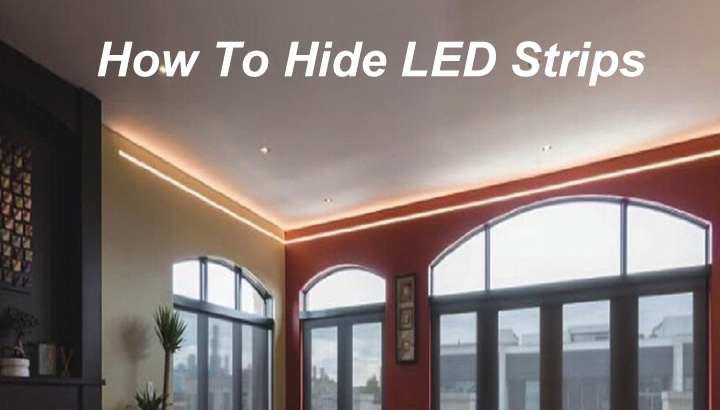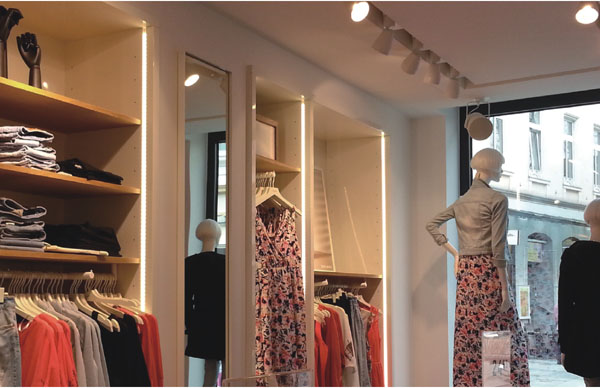If you do not have experience in interior decoration, adding LED strips to your ceiling or wall will be a big challenge. But it will be very easy if you know how to do it. So today, let us teach you how to do it.
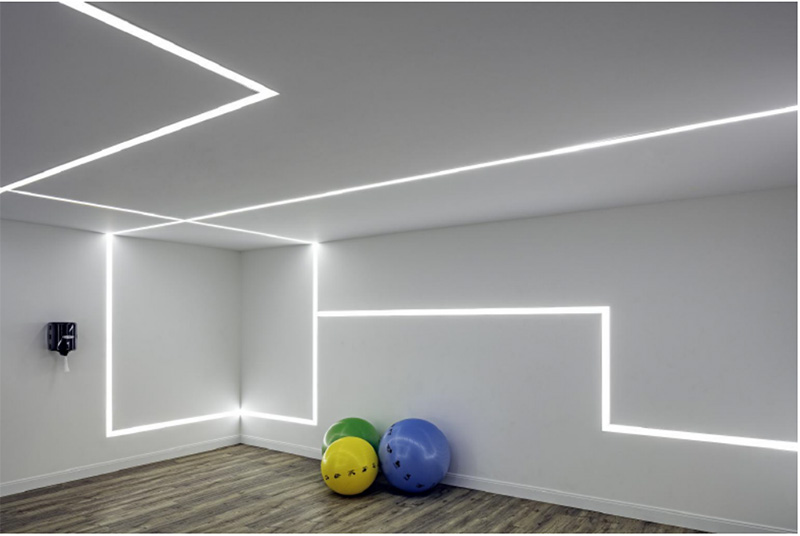
What are the benefits of mounting strip lights on ceilings/walls?
- Protect the LED lights: The common way to mount flexible LED strips on ceilings is to use double-sided adhesive tape or silicone clips. However, the exposed strip lights will be affected by the surrounding conditions, such as accidental bumps, spills, rain, etc., which may shorten the lifespan of the LEDs. So, if we could put them in something and keep them safe, it would extend the lifespan.
- Consistent With Your Designs: Adding a light strip alone will look out of tune with the overall design, especially when the surface of the light strip has components of different colors and the light dots on the SMD light strip. So, hiding the light strip with a slot that matches your interior will make the overall design more beautiful.
- Aesthetics: For a sophisticated look, hide strip lights on ceilings, walls, under cabinets, along baseboards, under shelves, etc. You can transform the space elegantly while keeping the interior design clear and gorgeous.
- Anti-glare: High-density LED strip lights cause glare, making people’s eyes uncomfortable and even causing headaches. This can be fixed simply by adding a diffused cover to the LED strips.
The Ways To Hide Them:
Using the aluminum LED channels will make hiding the LED strips on ceilings or walls easy. There are four ways to install the LED channels on the ceilings or walls:
- Suspended: The suspended installation method allows you to mount the LED strips on the ceilings to create a sleek and modern look, enhancing the overall design of your space. It also can add visual interest and depth to ceilings. There are lighting slots in the aluminum LED channels; you can stick the LED strips inside and clip in the diffusers to diffuse the light evenly, reducing harsh shadows and hotspots. This installation method can be in various configurations, such as straight lines, squares, or geometric patterns, allowing creative and customized lighting solutions.
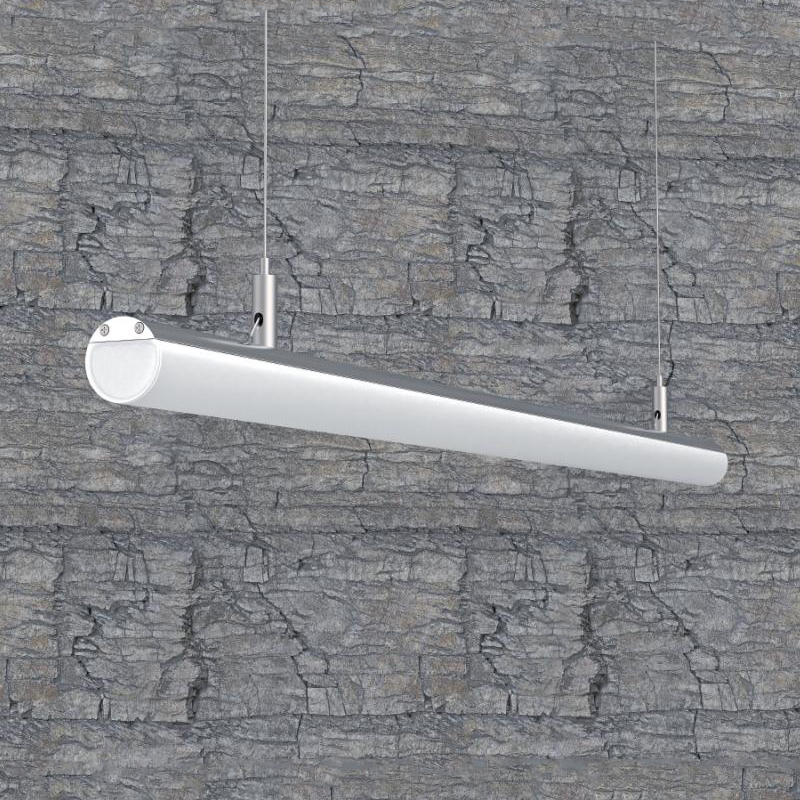
- Surface Mounted: This installation method is typically easy to install, often requiring only adhesive or screws. This makes them suitable for both DIY projects and professional installations. You can choose the various shapes and sizes of LED light channels, and they can be customized to fit different design aesthetics and applications for residential and business places. The flexible LED strips can be easily stick inside; the diffusers will diffuse the lighting smoothly without dark areas. They can provide direct lighting for task lighting. The aluminum channels will protect the strip lights from dust, moisture, and physical damage to extend their lifespan. The mounting clips are include, you can mount them on surface on walls or ceilings.
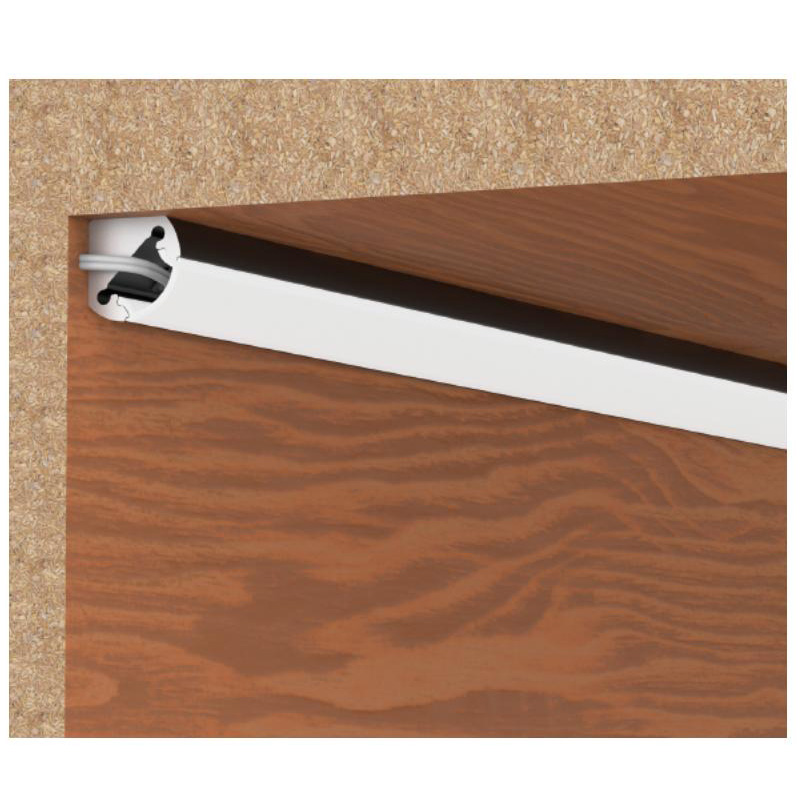
- Recessed: The recessed installation methods allow them to integrate with the surroundings seamlessly. By being flush with the ceiling or wall, they will create a clean, unobtrusive look, enhancing the overall design of your space without visible fixtures. Those light channels will provide uniform lighting, reducing harsh shadows and ensuring a balanced ambiance. The recessed designs will minimize direct glare, making them suitable for areas where comfort and visibility are important, especially in the residential spaces.
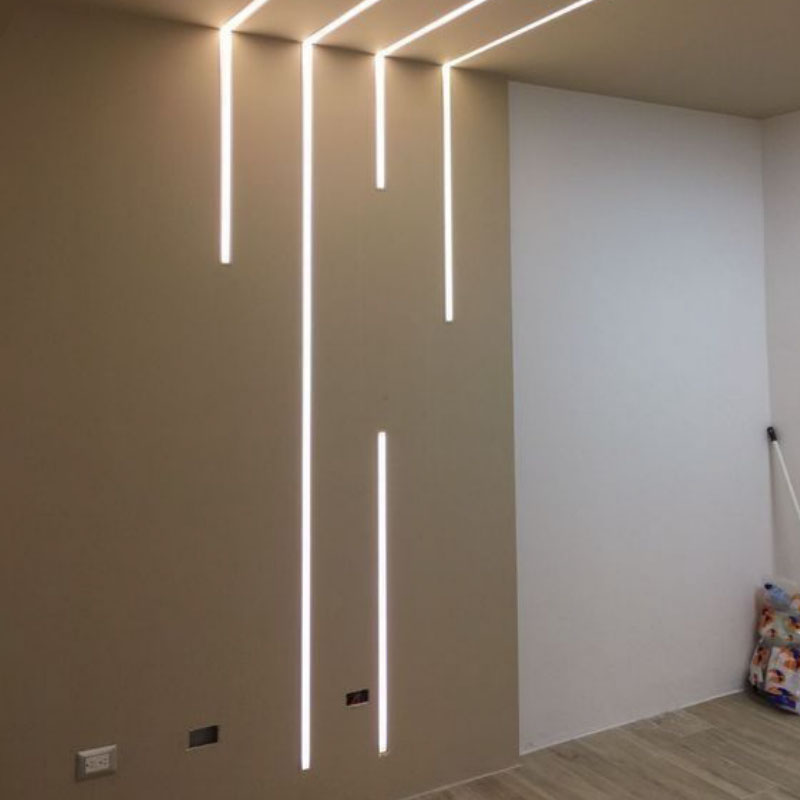
- Mud-in: The mud-in installation is another recessed method, particularly popular in architectural designs. It is designed to be embedded into the wall or ceiling, providing a flush, clean appearance that blends seamlessly with the surrounding surfaces, making it ideal for minimalist and contemporary interiors. The mud-in LED channels can be used for various purposes, including indirect lighting, accent lighting, and general illumination, allowing creative design possibilities.
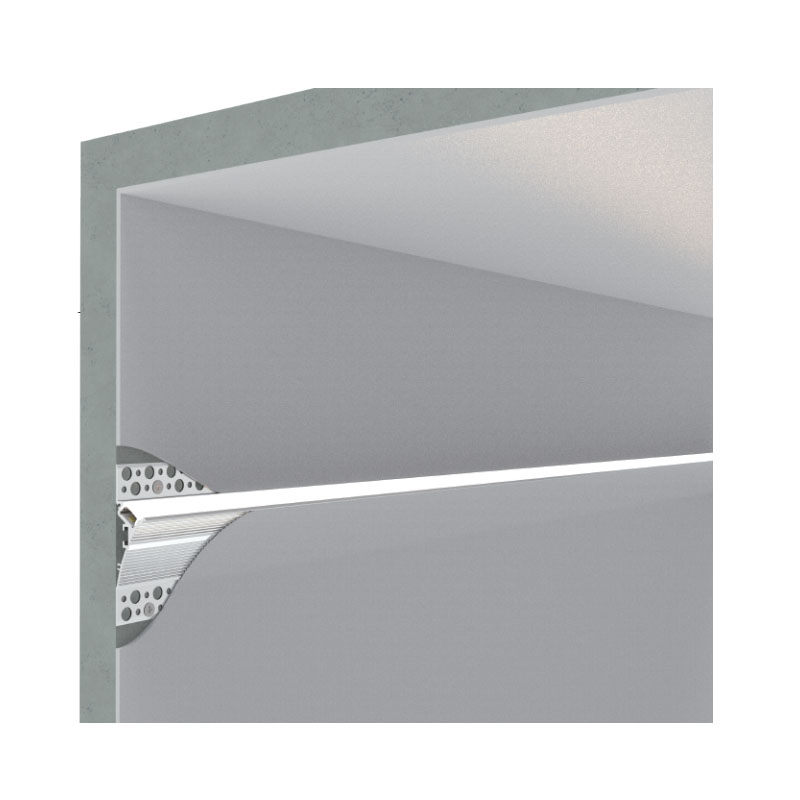
How to hide LED strips using aluminum channels:
- Choose the correct LED channels: Confirm the installation method for your LED strips and choose the right channels.
- Measure and cut: Measure the area where you plan to install LED strips and cut the channel to the desired length using a saw or cutter.
- Install LED channels: mount the aluminum LED channels on ceilings or walls.
- Peel off the backing from the LED strips and stick them inside the channel, ensuring they’re properly aligned.
- Clip-in the diffusers: snap or slide the diffused cover onto the channel to diffuse the light and hide the strip lights.
- Connect to the power supply: connect the LED strips to the power supply and check if the lighting is working.
- Check if everything is working correctly.
- Installation completely.
Conclusion:
The easiest and fastest method for hiding LED strips on walls or ceilings is to use aluminum LED channels. They look sleek and modern and provide even light output and anti-glare. They are great for DIY lighting projects and interior lighting design in your space.
